News
What is the color temperature range for smd LED lights
As a leading LED manufacturer, our main products include THT numeric display, SMD numeric display, dot matrix, bar graph, light-emitting diodes (LEDs), SMD, Flux, high-power LEDs, and modules. These products are widely used in various applications such as home appliances, mobile phones, road traffic, urban lighting, energy-saving lighting, and many others. One of our key strengths is our state-of-the-art facility, which boasts a 12000㎡ dust-free and antistatic standard workshop. This ensures that our manufacturing process is of the highest quality, resulting in superior products that meet the highest industry standards. We are proud to inform you that we have successfully obtained the national high tech enterprise certification, indicating our commitment to technological innovation and development. Additionally,
we have acquired the ISO9001:2015 and IATF16,949:2016 vehicle specification quality management system certifications, showcasing our dedication to maintaining high standards of quality in our products. Furthermore, many of our products have received the EU CE certification, ensuring their compliance with European safety standards. We have also obtained the US UL certification, demonstrating our adherence to stringent safety requirements in the United States. In addition to these certifications, our UV sterilization technology has passed the photobiological safety test requirements specified by EN62471, guaranteeing its effectiveness and safety. We have also met the European and American LM-80life test requirements, further proving the reliability and durability of our products. Moreover, we are proud to mention that our products fully comply with the current international RoHS and REACH regulations, ensuring environmental friendliness and reducing potential health hazards.
An Ultimate FAQ Guide:
2.What is the warranty for smd LED lights?
3.Do smd LED lights require any special disposal methods?
4.Are smd LED lights resistant to fading or discoloration?
5.How do smd LED lights compare to fluorescent or incandescent bulbs?
6.Do smd LED lights have a warm or cool light temperature?
7.What is the lumen output of smd LED lights?
8.Are smd LED lights suitable for use in photography or videography?
9.What is the color temperature range for smd LED lights?
10.Do smd LED lights have a wide range of dimming options?
11.What is the difference between smd LED lights and COB LED lights?
12.Are smd LED lights compatible with dimmer switches?
13.Are smd LED lights waterproof?
14.What is the power consumption of smd LED lights?
15.Do smd LED lights require any specific maintenance?
16.Are smd LED lights suitable for use in healthcare or sensitive environments?
1.Are smd LED lights easy to replace?
Yes, SMD LED lights are relatively easy to replace. The process is similar to replacing any other type of light bulb, but there are a few extra steps that need to be taken. First, you will need to identify the type of SMD LED light you are replacing. This can be done by looking at the product label or by consulting the manufacturer’s website. Once you have identified the type of SMD LED light, you will need to disconnect the power source. This can be done by unplugging the power cord or by turning off the circuit breaker. Next, you will need to remove the old SMD LED light. This can be done by unscrewing the light fixture or by using a screwdriver to remove the screws that hold the light in place. Once the old light is removed, you can install the new SMD LED light. This can be done by connecting the wires to the new light and then securing the light in place. Finally, you will need to turn the power back on and test the new light to make sure it is working properly. With a few simple steps, you can easily replace an SMD LED light.
2.What is the warranty for smd LED lights?
SMD LED lights come with a variety of warranties depending on the manufacturer. Generally, most manufacturers offer a one-year warranty on their products. This warranty covers any defects in materials or workmanship that may occur during normal use of the product. In addition to the one-year warranty, some manufacturers may offer an extended warranty for up to five years. This extended warranty may cover any defects in materials or workmanship that may occur during normal use of the product. It may also cover any repairs or replacements that may be necessary due to normal wear and tear. The warranty may also cover any repairs or replacements that may be necessary due to improper installation or use of the product. It is important to read the warranty carefully to understand what is covered and what is not. In addition to the warranty, some manufacturers may offer a satisfaction guarantee. This guarantee may allow customers to return the product if they are not satisfied with it. This guarantee may also cover any repairs or replacements that may be necessary due to normal wear and tear. It is important to read the warranty and satisfaction guarantee carefully to understand what is covered and what is not. It is also important to keep the original receipt and any other documentation that may be required for warranty claims. Overall, SMD LED lights come with a variety of warranties depending on the manufacturer. Generally, most manufacturers offer a one-year warranty on their products, with some offering an extended warranty for up to five years. It is important to read the warranty and satisfaction guarantee carefully to understand what is covered and what is not.
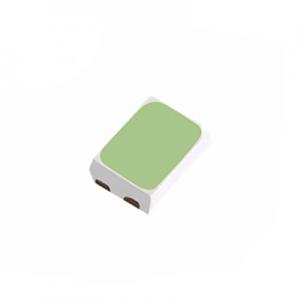
3.Do smd LED lights require any special disposal methods?
Yes, SMD LED lights require special disposal methods. LED lights contain hazardous materials such as lead, mercury, and other heavy metals, which can be harmful to the environment if not disposed of properly. To ensure that these materials are disposed of safely, it is important to follow the proper disposal methods. The first step is to contact your local waste management authority to find out what the proper disposal methods are in your area. In some cases, the waste management authority may be able to provide a special collection service for LED lights. If this is not available, then the lights should be taken to a hazardous waste facility. When disposing of LED lights, it is important to ensure that the lights are not broken or damaged. This is because broken LED lights can release hazardous materials into the environment. It is also important to ensure that the lights are properly sealed in a plastic bag or container before disposal. Finally, it is important to ensure that the LED lights are disposed of in accordance with local laws and regulations. This will help to ensure that the hazardous materials contained in the lights are not released into the environment. By following the proper disposal methods, you can help to protect the environment and ensure that hazardous materials are not released into the environment.
4.Are smd LED lights resistant to fading or discoloration?
SMD LED lights are highly resistant to fading and discoloration. This is due to the fact that they are made from solid-state components, which are not affected by heat or other environmental factors. The LED chips used in SMD LED lights are also highly efficient, meaning that they produce very little heat, which helps to prevent fading and discoloration. Additionally, the LED chips are encased in a protective coating that helps to protect them from UV rays and other environmental factors. This coating also helps to reduce the amount of light that is lost due to reflection and refraction. The LED chips used in SMD LED lights are also designed to last for a long time. This is because they are made from high-quality materials that are designed to withstand the test of time. The LED chips are also designed to be highly efficient, meaning that they produce very little heat, which helps to prevent fading and discoloration. Overall, SMD LED lights are highly resistant to fading and discoloration. This is due to the fact that they are made from solid-state components, which are not affected by heat or other environmental factors. Additionally, the LED chips are encased in a protective coating that helps to protect them from UV rays and other environmental factors. Finally, the LED chips are designed to be highly efficient, meaning that they produce very little heat, which helps to prevent fading and discoloration.
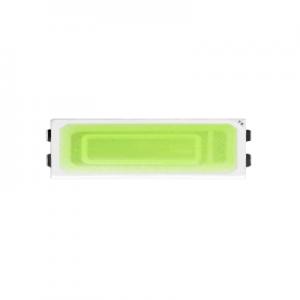
5.How do smd LED lights compare to fluorescent or incandescent bulbs?
SMD LED lights are a type of light-emitting diode (LED) that are surface-mounted on a circuit board. They are much more efficient than traditional incandescent and fluorescent bulbs, as they use less energy and last much longer. SMD LED lights are also much brighter than traditional bulbs, and they produce a more even light distribution. Additionally, they are more durable and resistant to shock and vibration, making them ideal for use in industrial and commercial applications. Compared to incandescent bulbs, SMD LED lights are much more energy efficient and last up to 50 times longer. They also produce a much brighter light, and they are available in a variety of colors. Additionally, they are more resistant to shock and vibration, making them ideal for use in industrial and commercial applications. Compared to fluorescent bulbs, SMD LED lights are much more energy efficient and last up to 10 times longer. They also produce a much brighter light, and they are available in a variety of colors. Additionally, they are more resistant to shock and vibration, making them ideal for use in industrial and commercial applications. Overall, SMD LED lights are a great alternative to traditional incandescent and fluorescent bulbs. They are much more energy efficient, last longer, and produce a much brighter light. Additionally, they are more durable and resistant to shock and vibration, making them ideal for use in industrial and commercial applications.
6.Do smd LED lights have a warm or cool light temperature?
SMD LED lights have a wide range of light temperatures, ranging from warm to cool. The light temperature of an SMD LED light is measured in Kelvin (K) and is typically between 2,700K and 6,500K. A light temperature of 2,700K is considered warm, while a light temperature of 6,500K is considered cool. Warm light temperatures are typically used in residential settings, as they create a cozy and inviting atmosphere. They are also used in commercial settings, such as restaurants and retail stores, to create a more inviting atmosphere. Warm light temperatures are also used in outdoor settings, such as gardens and patios, to create a more inviting atmosphere. Cool light temperatures are typically used in commercial settings, such as offices and warehouses, to create a more productive atmosphere. They are also used in outdoor settings, such as parking lots and streets, to create a brighter atmosphere. Cool light temperatures are also used in residential settings, such as bathrooms and kitchens, to create a more modern atmosphere. Overall, SMD LED lights have a wide range of light temperatures, ranging from warm to cool. The light temperature of an SMD LED light is typically between 2,700K and 6,500K, with a light temperature of 2,700K being considered warm and a light temperature of 6,500K being considered cool. Depending on the desired atmosphere, SMD LED lights can be used in both residential and commercial settings.
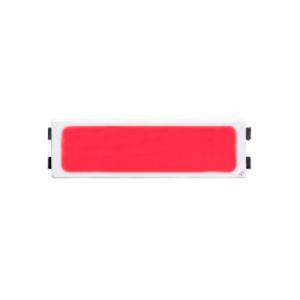
7.What is the lumen output of smd LED lights?
The lumen output of SMD LED lights can vary greatly depending on the type of LED used and the size of the light. Generally speaking, SMD LED lights are much brighter than traditional incandescent bulbs, and can range from as low as 10 lumens to as high as 1000 lumens. The most common type of SMD LED light is the 5050 SMD LED, which typically produces between 20 and 30 lumens per watt. This type of LED is often used in decorative lighting applications, such as in strip lights or accent lighting. The lumen output of SMD LED lights can also be affected by the size of the LED. Smaller LEDs, such as the 3528 SMD LED, typically produce between 10 and 15 lumens per watt, while larger LEDs, such as the 5050 SMD LED, can produce up to 30 lumens per watt. The size of the LED also affects the beam angle of the light, with larger LEDs producing a wider beam angle than smaller LEDs. In addition to the size and type of LED, the lumen output of SMD LED lights can also be affected by the number of LEDs used in the light. The more LEDs used, the brighter the light will be. For example, a strip light with 10 LEDs will produce a much brighter light than a strip light with only 5 LEDs. Overall, the lumen output of SMD LED lights can vary greatly depending on the type of LED used, the size of the LED, and the number of LEDs used in the light. Generally speaking, SMD LED lights are much brighter than traditional incandescent bulbs, and can range from as low as 10 lumens to as high as 1000 lumens.
8.Are smd LED lights suitable for use in photography or videography?
Yes, SMD LED lights are suitable for use in photography and videography. SMD LED lights are a type of light-emitting diode (LED) that is small in size and has a high luminous efficacy. This makes them ideal for use in photography and videography, as they are able to provide a bright, even light that is easy to control and manipulate. Additionally, SMD LED lights are energy efficient and have a long lifespan, making them a cost-effective option for photographers and videographers. SMD LED lights are also versatile and can be used in a variety of ways. They can be used as a key light, fill light, or backlight, and can be used to create a range of different lighting effects. Additionally, they can be used to light up small spaces, such as a studio or a set, and can be used to create a range of different looks. Overall, SMD LED lights are a great option for photographers and videographers who are looking for a cost-effective, energy-efficient, and versatile lighting solution. They are able to provide a bright, even light that is easy to control and manipulate, and can be used to create a range of different looks.
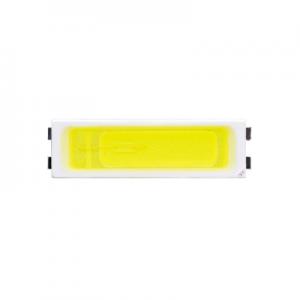
9.What is the color temperature range for smd LED lights?
The color temperature range for SMD LED lights is typically between 2700K and 6500K. The lower end of the range is considered to be a warm white light, while the higher end is considered to be a cool white light. The color temperature of an LED light is measured in Kelvin (K) and is a measure of the hue of the light. The lower the Kelvin number, the warmer the light will appear, while the higher the Kelvin number, the cooler the light will appear. At the lower end of the range, 2700K, the light will appear to be a warm yellowish-white color, similar to the light emitted from an incandescent bulb. This color temperature is often used in residential settings, as it is considered to be a more inviting and comfortable light. At the higher end of the range, 6500K, the light will appear to be a cool blue-white color. This color temperature is often used in commercial settings, as it is considered to be a more energizing and productive light. In addition to the color temperature range, SMD LED lights also come in a variety of color options, such as red, green, blue, and amber. These colors can be used to create unique lighting effects and can be used to highlight certain areas or objects. Overall, SMD LED lights offer a wide range of color temperatures and colors, making them a versatile and energy-efficient lighting option.
10.Do smd LED lights have a wide range of dimming options?
SMD LED lights do have a wide range of dimming options. Depending on the type of LED light, dimming can be achieved through a variety of methods. For example, some LED lights are dimmable with a standard dimmer switch, while others require a special dimmer switch or a dimmable LED driver. Additionally, some LED lights are dimmable with a remote control, allowing users to adjust the brightness of the light from a distance. In addition to dimming with a switch or remote, some LED lights are also dimmable with a 0-10V dimming system. This type of dimming system uses a low voltage signal to adjust the brightness of the light. This type of dimming system is often used in commercial applications, such as in offices and retail stores. Finally, some LED lights are dimmable with a DMX system. This type of dimming system uses a digital signal to adjust the brightness of the light. This type of dimming system is often used in theatrical and architectural lighting applications. Overall, SMD LED lights have a wide range of dimming options, allowing users to adjust the brightness of the light to suit their needs. Whether you need a dimmer switch, a remote control, a 0-10V dimming system, or a DMX system, there is an LED light that can meet your needs.
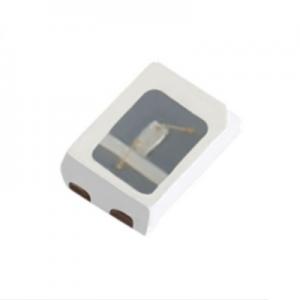
11.What is the difference between smd LED lights and COB LED lights?
SMD LED lights (Surface Mounted Device) are small, surface-mounted components that are used to create light. They are typically used in applications such as automotive lighting, backlighting, and signage. SMD LED lights are made up of individual LED chips that are mounted onto a circuit board. This allows for a more efficient use of space and a more uniform light output. COB LED lights (Chip On Board) are a type of LED light that uses multiple LED chips that are mounted directly onto a circuit board. This allows for a more efficient use of space and a more uniform light output. COB LED lights are typically used in applications such as automotive lighting, backlighting, and signage. The main advantage of COB LED lights is that they are more efficient than SMD LED lights, as they are able to produce more light with less energy. Additionally, COB LED lights are more durable than SMD LED lights, as they are less likely to be damaged by shock or vibration. In summary, the main difference between SMD LED lights and COB LED lights is that COB LED lights are more efficient and durable than SMD LED lights. Additionally, COB LED lights are able to produce more light with less energy, making them a more cost-effective option.
12.Are smd LED lights compatible with dimmer switches?
Yes, SMD LED lights are compatible with dimmer switches. LED lights are designed to be dimmable, and when used with a compatible dimmer switch, they can be adjusted to create the desired level of brightness. LED lights are more efficient than traditional incandescent bulbs, and they produce less heat, making them ideal for use with dimmer switches. When using LED lights with a dimmer switch, it is important to make sure that the switch is compatible with the LED lights. Most LED lights are designed to work with a wide range of dimmer switches, but some may require a specific type of switch. It is also important to make sure that the wattage of the LED lights is compatible with the dimmer switch. If the wattage is too high, the dimmer switch may not be able to handle the load. When installing LED lights with a dimmer switch, it is important to follow the manufacturer’s instructions. This will ensure that the lights are installed correctly and that they are compatible with the dimmer switch. It is also important to make sure that the dimmer switch is rated for the wattage of the LED lights. Overall, SMD LED lights are compatible with dimmer switches. However, it is important to make sure that the dimmer switch is compatible with the LED lights and that the wattage of the LED lights is compatible with the dimmer switch. Following the manufacturer’s instructions will help ensure that the LED lights are installed correctly and that they are compatible with the dimmer switch.
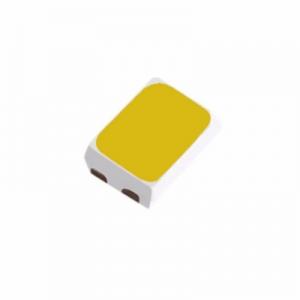
13.Are smd LED lights waterproof?
Yes, SMD LED lights are waterproof. SMD stands for surface-mount device, and these lights are designed to be mounted directly onto a surface. This makes them ideal for outdoor applications, as they are able to withstand the elements. The waterproofing of SMD LED lights is achieved through the use of a special coating that is applied to the surface of the light. This coating is designed to repel water and other liquids, and it also helps to protect the light from dust and dirt. The waterproofing of SMD LED lights is further enhanced by the use of a special sealant that is applied to the edges of the light. This sealant helps to keep water and other liquids from entering the light, and it also helps to keep dust and dirt out. The sealant also helps to keep the light from corroding or rusting over time. In addition to being waterproof, SMD LED lights are also highly durable. They are designed to withstand extreme temperatures, and they are also resistant to shock and vibration. This makes them ideal for use in harsh environments, such as in industrial settings or in areas that are exposed to the elements. Overall, SMD LED lights are a great choice for outdoor applications. They are waterproof, durable, and resistant to shock and vibration. They are also energy efficient, making them a great choice for those looking to save money on their energy bills.
14.What is the power consumption of smd LED lights?
SMD LED lights are a type of light-emitting diode (LED) that is used in a variety of lighting applications. These lights are known for their energy efficiency and long life. The power consumption of SMD LED lights depends on the type of LED used, the size of the LED, and the number of LEDs used in the lighting system. Generally, SMD LED lights consume between 0.5 and 1 watt of power per LED. This is significantly lower than traditional lighting sources such as incandescent bulbs, which can consume up to 60 watts of power. The power consumption of SMD LED lights can also be affected by the type of LED used. For example, high-power LEDs can consume up to 3 watts of power per LED, while low-power LEDs can consume as little as 0.2 watts of power per LED. The size of the LED also affects the power consumption of SMD LED lights. Smaller LEDs tend to consume less power than larger LEDs. The number of LEDs used in a lighting system also affects the power consumption of SMD LED lights. The more LEDs used, the higher the power consumption. For example, a lighting system with 10 LEDs will consume more power than a lighting system with 5 LEDs. In addition to the type of LED, size, and number of LEDs used, the power consumption of SMD LED lights can also be affected by the type of driver used. Drivers are used to control the power supply to the LEDs and can affect the power consumption of the LEDs. Overall, SMD LED lights are an energy-efficient lighting solution that can consume significantly less power than traditional lighting sources. The power consumption of SMD LED lights can vary depending on the type of LED, size, and number of LEDs used, as well as the type of driver used.
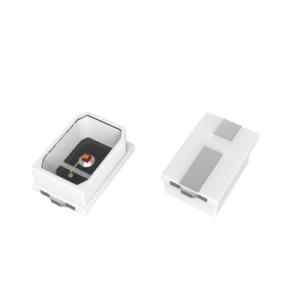
15.Do smd LED lights require any specific maintenance?
SMD LED lights do not require any specific maintenance, but there are a few things that can be done to ensure they last as long as possible. First, it is important to make sure the lights are kept clean and free of dust and dirt. This can be done by wiping them down with a soft cloth or using compressed air to blow away any debris. Additionally, it is important to check the connections and wiring of the lights to make sure they are secure and not loose. This can be done by inspecting the connections and tightening any loose screws. It is also important to check the power supply of the lights to make sure it is providing the correct voltage and current. If the power supply is not providing the correct voltage or current, it can cause the lights to flicker or not work at all. Additionally, it is important to check the temperature of the lights to make sure they are not overheating. If the lights are too hot, they can be damaged and will need to be replaced. Finally, it is important to check the LED driver of the lights to make sure it is functioning properly. The LED driver is responsible for controlling the current and voltage of the lights, and if it is not functioning properly, the lights may not work correctly. Overall, SMD LED lights do not require any specific maintenance, but it is important to keep them clean, check the connections and wiring, check the power supply, check the temperature, and check the LED driver to ensure they last as long as possible.
16.Are smd LED lights suitable for use in healthcare or sensitive environments?
Yes, SMD LED lights are suitable for use in healthcare or sensitive environments. SMD LED lights are energy efficient, long lasting, and produce very little heat, making them ideal for use in healthcare or sensitive environments. They also produce a bright, uniform light that is easy on the eyes and can help reduce eye strain. Additionally, SMD LED lights are free of hazardous materials, such as mercury, and are RoHS compliant, meaning they are safe for use in healthcare or sensitive environments. Furthermore, SMD LED lights are highly durable and resistant to shock and vibration, making them ideal for use in healthcare or sensitive environments where they may be subject to frequent movement or handling. Finally, SMD LED lights are available in a variety of colors and brightness levels, allowing for customization to suit the needs of any healthcare or sensitive environment. In conclusion, SMD LED lights are an ideal choice for use in healthcare or sensitive environments due to their energy efficiency, long life, and safety features.
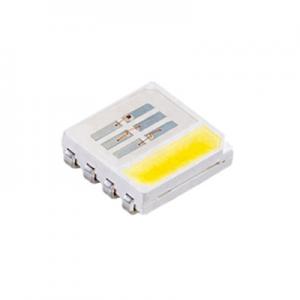
RELATED NEWS
- The future will be a golden decade for the development of the DIP LED industry
- The most powerful 7 segment LED display screen manufacturer
- Dig deep into the management of products and display module products
- Breaking through key common technologies and promoting the transformation and up
- What are the Heat Dissipation Features of SMD LED 2016 0.5W Lights
CATEGORIES
LATEST NEWS
CONTACT US
Name: Ms.Wendy
Mobile:0086-15861679389
Tel:0086-81725657
Whatsapp:0086 17386542651
Email:info@arktechcn.com
Add:8# HengDa CaiFu Center, JinKai Industrial Area, Wuci City, Jiang Su, China
